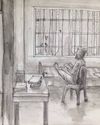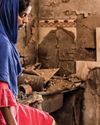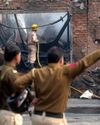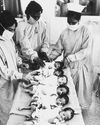How Peru’s poorest are solving their water woes / Politics

On one of the hills on the outskirts of Lima, the capital of Peru, stands an installation by the artist Sandra Nakamura, inspired by the United States’s Hollywood Sign. The large letters of the work say, “UNA PROMESA ES UNA NUBE,” or “A promise is a cloud”—a reference to an Arabic proverb: “A promise is a cloud; the fulfillment is the rain.”
The sign’s full import, though, would be lost on those unfamiliar with Lima’s socio-economic realities. The majority of the city’s urban poor live on its fringes, in slums scattered across the hills above Lima. These localities—called asentamientos humanos, or human settlements—are barely fit for humans. With clouds covering the hills, the settlements are enveloped by fog for most of the year. They have few roads, no property titles for people’s homes and, most importantly, no running water. For people’s daily needs, the Lima municipality’s tanker trucks deliver water, which can be five times more expensive than the running water supplied to more affluent areas. The only other source is the polluted Lurin river, whose water must be boiled before consumption.
Esta historia es de la edición April 2017 de The Caravan.
Comience su prueba gratuita de Magzter GOLD de 7 días para acceder a miles de historias premium seleccionadas y a más de 9,000 revistas y periódicos.
Ya eres suscriptor ? Conectar
Esta historia es de la edición April 2017 de The Caravan.
Comience su prueba gratuita de Magzter GOLD de 7 días para acceder a miles de historias premium seleccionadas y a más de 9,000 revistas y periódicos.
Ya eres suscriptor? Conectar

Mob Mentality
How the Modi government fuels a dangerous vigilantism

RIP TIDES
Shahidul Alam’s exploration of Bangladeshi photography and activism

Trickle-down Effect
Nepal–India tensions have advanced from the diplomatic level to the public sphere

Editor's Pick
ON 23 SEPTEMBER 1950, the diplomat Ralph Bunche, seen here addressing the 1965 Selma to Montgomery March, was awarded the Nobel Peace Prize. The first black Nobel laureate, Bunche was awarded the prize for his efforts in ending the 1948 Arab–Israeli War.

Shades of The Grey
A Pune bakery rejects the rigid binaries of everyday life / Gender

Scorched Hearths
A photographer-nurse recalls the Delhi violence

Licence to Kill
A photojournalist’s account of documenting the Delhi violence

CRIME AND PREJUDICE
The BJP and Delhi Police’s hand in the Delhi violence

Bled Dry
How India exploits health workers

The Bookshelf: The Man Who Learnt To Fly But Could Not Land
This 2013 novel, newly translated, follows the trajectory of its protagonist, KTN Kottoor.